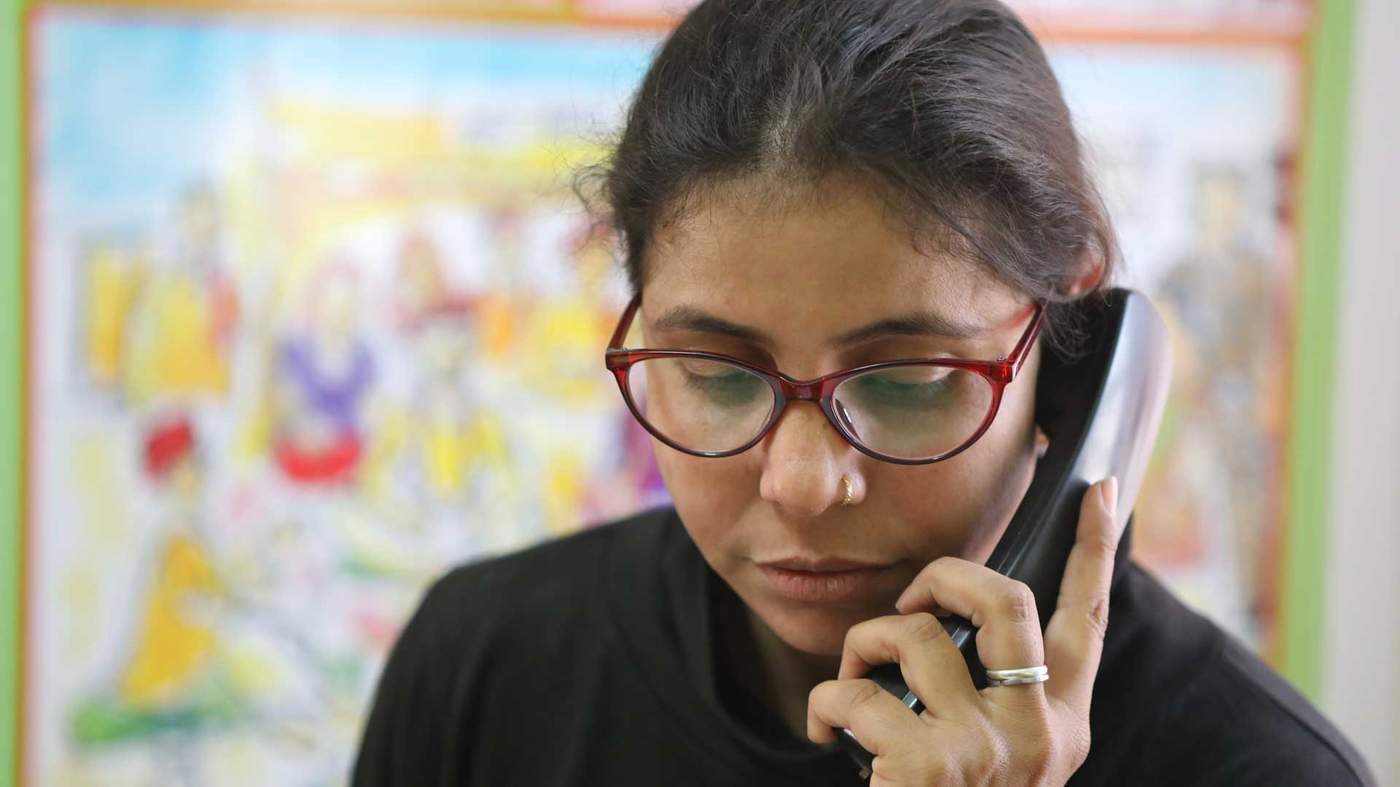On the morning of any wedding there’s a lot of preparation. On 4 November, Monika’s hair needed doing and her make-up had to be artfully applied. The bride needed her maroon wedding sari put on, as tradition dictated.
The jewellery set aside for this special day had to be placed on her ears and nose and draped across her neck. For this Indian wedding, her hands needed to be daubed with intricate swirls of henna too.
There was so much to do. But with only a few hours to go until the ceremony, no-one noticed as the bride herself quietly slipped into the shadows of the family home to make one last phone call.
It was not to a friend, or a caterer, or the wedding venue to check everything was going smoothly.
Instead, nervously, Monika dialled four digits - 1098 - the number of a helpline. Too young to marry under Indian law, Monika wanted to stop her own wedding.
She was 13 when her marriage was meant to happen. That’s according to the charity that helped her, and comes from her school records.
Her parents claim she’s more like 17. It’s common in this part of India for the ages of some people to be a little hazy. Birth certificates often don’t exist for poor families like Monika’s. What is not in doubt is that she is still a child, and that the law only allows marriage at 18.
The city may not be as well known a tourist location as Jaipur or Jodhpur but it is still one of those places which assails every sense. Ganesh passed grocery stalls piled high with a rainbow of vegetables and endured the piercing horns of tuk-tuks hurtling through the streets and the smell of fresh camel dung at the roadside.

On his return later that evening, he and Monika’s mother, Sita, sat their daughter down and told her that they had found her someone to marry. “Mummy and Papa told me they’d found a boy for me in Churu [115 miles away] and that he was very nice and educated and worked as a labourer,” recalls Monika.
I felt that I was too young and that I shouldn’t marry - I wanted to get an education and become a teacher”
When I ask her to describe her then husband-to-be she says simply, without any drama or emotion, that she had never met him but her parents did show her a photograph. He was 22.
As an obedient daughter, her first instinct was to do as her parents wished but her emotions were in turmoil. “I felt that I was too young and that I shouldn’t marry. I wanted to get an education and become a teacher.”
Monika pleaded with her parents. “I told them that I didn’t want to get married, and they asked why, so I explained that a girl should be at least 18 years old.”
Marriage would have meant a life of isolation.
Her prospective husband lived a four-hour train journey away from her own family. “After getting married, life would have been spent only in this new home. Nobody would have allowed me to play, or talk, and I would have had to take care of all the household chores. My in-laws would have made me do a lot of work - and only work.”
So why did Monika’s parents think it was right to marry off their daughter so young?
The city may not be as well known a tourist location as Jaipur or Jodhpur but it is still one of those places which assails every sense. Ganesh passed grocery stalls piled high with a rainbow of vegetables and endured the piercing horns of tuk-tuks hurtling through the streets and the smell of fresh camel dung at the roadside.

On his return later that evening, he and Monika’s mother, Sita, sat their daughter down and told her that they had found her someone to marry. “Mummy and Papa told me they’d found a boy for me in Churu [115 miles away] and that he was very nice and educated and worked as a labourer,” recalls Monika.
I felt that I was too young and that I shouldn’t marry - I wanted to get an education and become a teacher”
When I ask her to describe her then husband-to-be she says simply, without any drama or emotion, that she had never met him but her parents did show her a photograph. He was 22.
As an obedient daughter, her first instinct was to do as her parents wished but her emotions were in turmoil. “I felt that I was too young and that I shouldn’t marry. I wanted to get an education and become a teacher.”

Monika pleaded with her parents. “I told them that I didn’t want to get married, and they asked why, so I explained that a girl should be at least 18 years old.”
Marriage would have meant a life of isolation.
Her prospective husband lived a four-hour train journey away from her own family. “After getting married, life would have been spent only in this new home. Nobody would have allowed me to play, or talk, and I would have had to take care of all the household chores. My in-laws would have made me do a lot of work - and only work.”
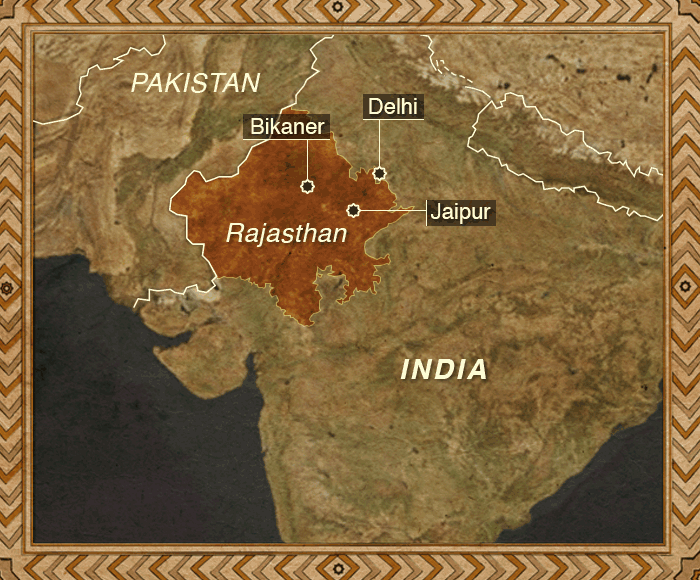
So why did Monika’s parents think it was right to marry off their daughter so young?

As we sit and drink tea in the small, simply tiled courtyard of their home, it’s clear Ganesh and Sita are loving parents to their five daughters, but life is a struggle. Ganesh earns 500 rupees a day (£5.50) and his work is sporadic. His bike is propped against the yard wall, ready if a job suddenly comes up.
The family is from the Valmiki - or sweeper - caste. In the past, that would have meant they were classed in the untouchables of Indian society. Even today they are very much on the fringes of their local community and they only mix with other families from the same caste.

Monika’s mother and grandmother clear waste from houses in the neighbourhood. As is often the case with families from this background, the older daughters have only received a little education. Indeed, when I ask Monika how many school friends she has, she replies matter-of-factly that she doesn’t have any. Her studies seem to have petered out. It sounds like a solitary existence for a teenager.
Stacked in the corner of one of the rooms off the courtyard is a pile of furniture. It includes a sturdy chest with a lock on it and a brand new fridge in all its original packaging. This is puzzling as the house doesn’t appear to have a working fridge of its own.

Ganesh
This jealously guarded hoard is Monika’s dowry - painstakingly saved up by her father for the day she marries. Ganesh sees his prime responsibility as getting his daughters married and settled down.
His eldest daughter, Rajini, was due to marry legally in November. Her groom had a brother and Monika’s family thought it made sense to have a double wedding. “We thought that if we marry two daughters at the same time then the costs would only be for one wedding and not two,” explains her father.
“We are a family of labourers and sometimes I get jobs in construction work but sometimes I don’t. We thought since we are marrying our one child we will marry another one and save on the expense.”
But what they had planned for Monika was illegal under Indian law. Ganesh looks awkwardly at his hands. “We did know that it is a criminal offence. We did feel bad.”

Sita
For Sita, though, it’s as if their circumstances didn’t leave them much choice. “What should we do?” she says as she shrugs her shoulders.
The marriage was also arranged with Monika’s personal safety in mind, Sita argues. “When we go out for work, we worry about leaving our daughter alone at home as the neighbourhood where we live is unsafe. It was out of the fear for her security that we thought that we would marry off both sisters together.”
These kind of multiple marriages are common in Rajasthan. Often, only the oldest girl’s name is mentioned on the invitation. It makes it much harder for the authorities to detect a child marriage when there is the cover of a perfectly legal marriage happening simultaneously.
But in Monika’s case the authorities received a tip-off.
It came from the bride herself.
As Monika sits alongside her parents and recounts her story, she seems to bear them no ill will. But last year, as the wedding drew nearer, it must have been a time of immense tension.
She does not appear to be a natural teenage rebel and her shy mannerisms suggest a girl who is still finding her own voice in the world. Yet somewhere within she found the strength to kick back against the plans her family had made.
The trigger point for Monika came on the wedding day. “When I saw my sister wearing her wedding dress, I realised that only she could do this - I just couldn’t.”
Her gut feeling drove her to call the national hotline - ChildLine. Monika had seen the easy-to-remember number - 10-9-8 - in books. She borrowed a phone from her unwitting grandmother and rang. The wedding was then only hours away.

She was afraid but this was her last resort. “I called up and I don’t know who picked up the phone but I told them everything - that I’m young and I don’t want to get married and want to study further.
“I asked them ‘can you please do something that stops my marriage?’.”
The helpline operator in Delhi tried to calm her down. They took details of her location and the time of the wedding. The message, Monika recalls, was “don’t worry we’re on our way”.
She’s often in a race against time to save young girls from becoming child brides and can be seen zipping around town on her small white moped.
“We had a tricky challenge as we had to save a child in just three hours’ time,” Preeti says.
Over the phone, she managed to win Monika’s trust and talk her through what would happen next.

Local police were scrambled and arrived at Monika’s house at about 17:00. The officers asked to see the paperwork - of which there was little - and after establishing that the bride was underage they warned everyone that the wedding could not take place.
But the family ignored the police and at 20:00 Monika rang Preeti again. Her parents had changed the wedding venue to her grandmother’s house and were still trying to marry her off.
“This was a change of venue to hide the wedding,” explains Preeti. “So we again contacted the police department. Myself, a female constable and two male police officers reached the new venue for the wedding at 22:00.”

It was just in the nick of time. “Monika was in her wedding dress and when she saw us she gave a little smile, although she didn’t say anything at that time. She knew that we had come to stop her wedding. She was happy then.”
The rest of the wedding party were bemused. “There were relatives all around who were asking each other in low murmurs about why the police had arrived.”
No-one knew who had reported the wedding to the police. It is only now that Monika is happy for it to be known that she made the mystery call.
The next task for Preeti and the police was to make sure the parents understood the gravity of the situation.
“We called Monika’s parents and grandparents into a room and explained that not only does the child suffer because of early marriage but they too could also face a punishment for this offence.
“So they stopped the wedding and the police took a written testimony from them promising they would not marry her before the age of 18. They were warned if they went ahead with it a second time then they would have to serve a prison sentence.”
Preeti has seen between 20 and 25 cases of child marriage crossing her desk since the beginning of January this year. The winter months are part of the traditional marriage season in Rajasthan.
Child marriage was banned in India in 2006 but it is still widespread. With its huge population, India remains the country with the most child brides, according to Unicef.
Preeti sees herself as a big sister figure for girls like Monika and admits to immense job satisfaction. “In my career I have stopped several weddings and when I come into direct contact with these girls we often stay in touch forever. I feel real pride that I am able to help them salvage their lives and protect their futures. It makes me feel happy.”
It’s midday in the village of Husangsar in the middle of the Thar Desert in Rajasthan. All around, the sand dunes reflect the fierce sun, dazzling the unprepared visitor.
Some of the houses here are just simple wooden huts with parched-looking thatching on top. Local children crowd round a tap on the wall of a schoolhouse - cupping their hands and dipping their heads as they slurp up the water.

Inside the girls’ school, I ask the pupils whether they know any friends who have been married young. They turn in unison and point to one of their number who they say was married aged 10.
Her name is Pooja.
She’s dressed demurely in a caramel-coloured tunic and wearing a beaded necklace.
As with Monika, there’s slight confusion over Pooja’s real age. She is in the school year for 14 to 15-year-olds, though she tells me she’s a couple of years older.
At first, like any self-conscious teenager, Pooja seems a little intimidated by the sea of faces turned eagerly to hear her story. But, after a nod of encouragement from her teacher, she visibly relaxes and starts to talk:
Pooja’s parents have agreed to delay gauna - the moment when a bride is sent to live with her husband’s family and the time when she is expected to have sex.
This way, Pooja at least gets to have some schooling and doesn’t suffer the physical complications of early pregnancy. Even so, the message Pooja has had at school is that early marriage is wrong.
“Our teacher says a girl should be at least 18 and a boy at least 21 when they wed.”
And then she says something that sounds more from the heart than from a textbook: “Girls should be educated. I want to say this to all the villagers - don’t get underage girls married. Don’t ruin their life. If someone does that forcefully, call ChildLine on 10-9-8. This will help stop child marriage.”
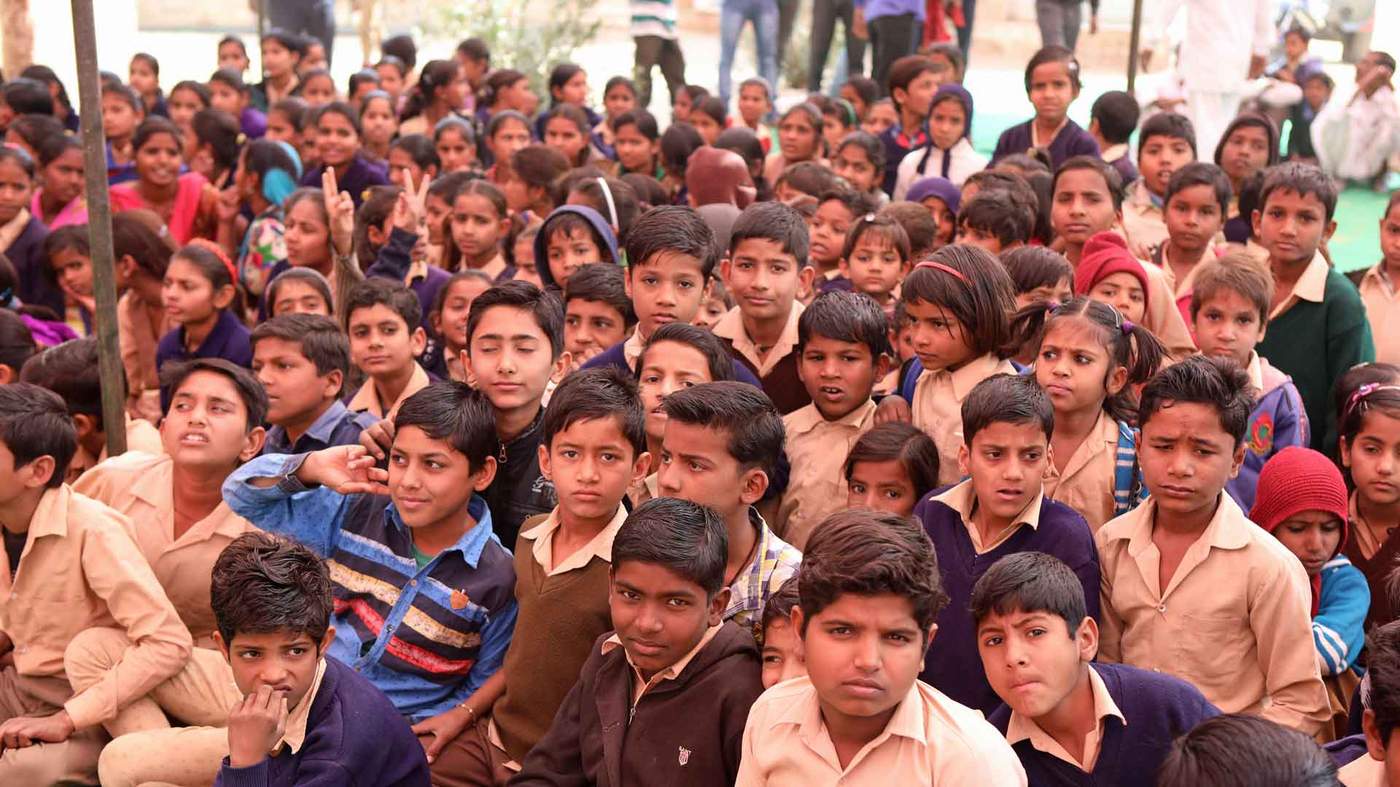
Before the puppet show audience breaks up for lunch there is a poignant moment where all present - including Pooja and her friends - rise to their feet and raise an arm. The entire village of Husangsar is taking an oath to observe the law and make their community a child marriage-free zone from now on. In the surrounding districts, 178 villages have taken this same oath.

Our next stop is the village of Lunkaransar, home to a girls’ boarding school and also in the Thar Desert. It’s a collection of low white buildings with a few Indian lilacs - or neem trees - providing shade in the centre. Here a group of schoolgirls are singing and clapping as they sit on wooden benches. Two or three have even got to their feet and are dancing with all the panache of Bollywood film stars.
A formidable young woman named Radika Swami runs this music session. Now in her early 20s, she became something of an activist on child marriage after she was told she would marry aged 17.
Radika’s story has some parallels to Monika’s.
Both Radika’s mother and grandmother had been child brides so this was not a custom easily broken. But, through the sheer force of her personality, Radika persuaded her father and grandfather to keep her in education and break off the engagement. Now she works as a warden at this school campus teaching other girls about the importance of sticking with their studies.

Radika Swami refused to marry in her teens
Through music and drama, Radika tries to raise awareness. She has written a play on the subject of female foeticide - the selective abortion of girls in the womb. Although it is supposed to be illegal in India, it is still widely practised in states such as Rajasthan.
In 2011, Rajasthan had 888 girls for every 1,000 boys below the age of six. This skewed sex ratio leads to a shortage of girls of marriageable age which, in turn, fuels the demand for child brides.
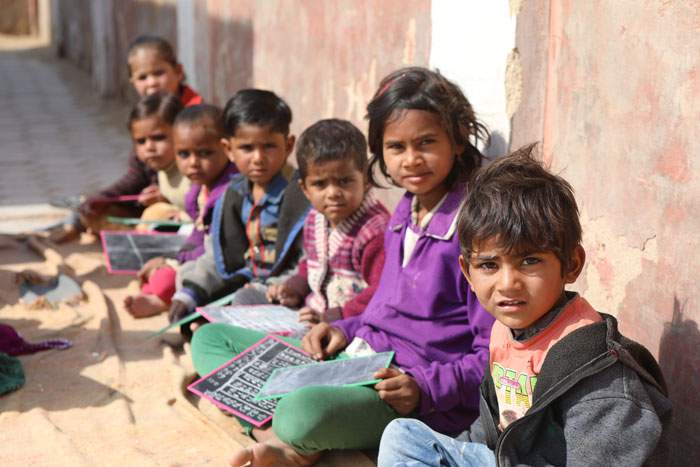
Radika is sure much more needs to be done to involve boys in prevention work. “Communities can take time in listening to what girls are saying, but with boys they are always heard instantly. So if we work with both sexes then we will get 100% results.”
Across the world, 12 million girls every year marry before the age of 18 - that’s one in every five, according to children’s charity Unicef.
A decade ago that figure was one in four but new analysis from Unicef suggests there has been significant progress in recent years, particularly in South Asia. In fact, in the past decade a girl in South Asia has seen her risk of being married off early drop from 50% to 30%. India is one of the countries which has led the way.
Campaigners say that success now needs to be copied in sub-Saharan Africa. Niger, for example, remains the country with the highest overall rate (76%) of child marriage in the world.
It isn’t only a problem in the developing world. Child marriage even persists in some communities in Europe and North America. The marriageable age in many European countries is 16 with parental consent.
There are a number of reasons for the practice. In cases like Monika’s, poverty is key. But campaigners say it’s primarily an issue of gender inequality.
“Fundamentally, it happens to girls because they are seen as being less valuable than boys,” says Lakshmi Sundaram from Girls Not Brides, a global partnership of more than 900 civil society organisations.

“Girls do not get given the same opportunities as boys. So if a family only has money to send one child to school, they will send the boy and not the girl. If they only have enough food to feed a certain number of their children, they will marry off the girl so that they can consolidate their resources.”

Global statistics suggest it is most common in rural areas and child brides are more likely to have low levels of education.
According to Sundaram, schools are one of the best forms of protection: “When a girl is in school there’s a feeling from the whole community that this is a student and a child who should be allowed to stay on that trajectory and finish their studies. But as soon as she comes out of that school she’s then seen as a future wife and mother. So families often think ‘why don’t we just hurry it up - what are we waiting for?’.”
Many countries now have laws which set the minimum age of marriage at 18 but it is often allowed to be lower with parental consent or the judgement of a court.
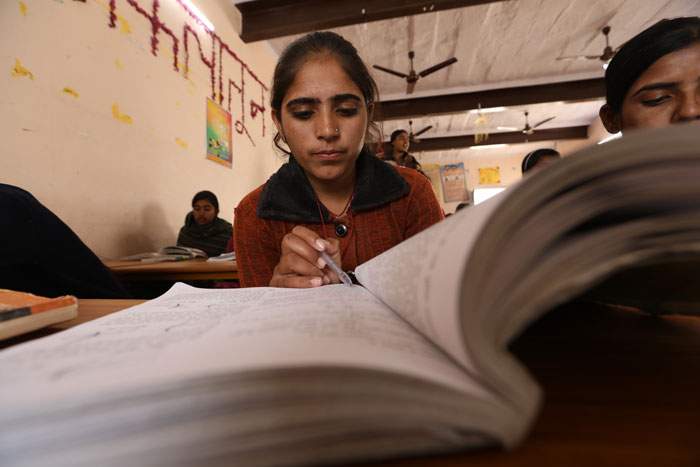
Campaigners say one of the best strategies is to involve religious leaders or tribal elders in the campaign to end child marriage. Once these figures of authority are on board, public opinion in the wider community can change very quickly.
Some countries have started offering cash handouts to families if they agree to leave their daughters in school. Technology can be useful as well. One charity - Vikalp Sansthan - uses phone notifications to warn wedding photographers and make-up artists that their involvement in any underage nuptials will result in legal action.
Above all, a better sense of the costs of child marriage is now emerging. This includes not only the physical problems of domestic violence and early pregnancy but the mental toll it takes on young brides too.

“Girls... are seen as being less valuable than boys”
And there could be an economic dividend from lower population growth and more girls completing their education, staying healthier and getting better jobs.
While it is good news that child marriage cases are falling across the world, Sundaram is adamant there’s no room for complacency: “The rates of child marriage are declining but because of population growth the actual numbers of child brides continue to increase. So we have to accelerate progress if those numbers are to come down more dramatically in future.”
There’s a commotion outside Monika’s house as word spreads round the neighbourhood that the ���˿��� has come from London to interview her. “Is this about the wedding that was called off?” a nosey neighbour asks our translator. That alone gives you a sense of how big a deal it was for a young girl to report her parents.
In a strange way, you can see Monika’s mother is actually proud of what her daughter did. “Yes, I feel good about it,” admits Sita. “I really rather like the idea that my daughter has done it. Change has come for all.”
For her part, Monika is certain that she did the right thing and wants her story told: “I am glad that my experience will be shared with others. Maybe some other girl will learn from my case and she too can stop her child marriage. And if she can’t stop it, then I will even help her out myself!”

What is so striking about Rajasthan is how girls like Monika are taking the fight against child marriage into their own hands, in a culture where their voices are often not heard. The education these girls receive, though it’s often limited, is teaching them that they should not be married off before 18.
It feels inconceivable that 10 or 20 years ago this kind of bottom-up resistance would have existed in poor urban areas or remote desert villages. Back then, girls would have been more pliant in accepting their fate as it was seen by a patriarchal society.
Now it seems like there is the prospect of real change.
Not everything is perfect for Monika. She tells us wistfully she would like to return to school - something the Urmul Trust is trying to arrange. But as she sits with her new friend, Preeti, on the porch of the family home watching the world go by in the evening twilight, it’s easy to see how just how young she is and what a lucky escape she’s had.
A childhood was nearly lost. Now - through an act of teenage rebellion - a childhood has been regained.





